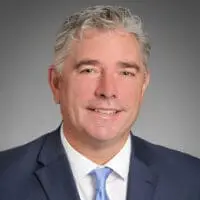Environmental & Natural Resources Law
Idaho Finally Joins the EPA Primacy Party for Water Pollutant Discharge
In 2014, what did Idaho, New Mexico, New Hampshire and Massachusetts have in common?
Answer: the only states in the Union where pollutant discharge in waterways was overseen by the federal government (the U.S. Environmental Protection Agency), rather than the state. At the time, pollutant discharge permitting was administered though the National Pollutant Discharge Elimination System (NPDES) Program which was operated by the United States Environmental Protection Agency (EPA). However, years prior to 2014, Idaho permit-holders became frustrated with EPA’s permitting program due to large backlogs in issuing new permits. This was a statewide issue given that permit holders were from every corner of the Gem State, comprising municipalities and industrial users (such as operators in the mining and agricultural sectors). So, in 2014 the Idaho legislature, with the backing of Idaho industries, directed the Idaho Department of Environmental Quality (IDEQ) to seek EPA authorization for a state-operated pollutant discharge elimination system permitting program. In order to obtain approval of a state program, Idaho was required to submit a primacy application adhering to the Clean Water Act and 40 CFR 123. Under the Clean Water Act and 40 CFR 123, Idaho was required to demonstrate it had the resources, (including the revenue resources), personnel, the expertise as well as regulatory process in place to fully implement the statewide program. On August 9, 2016, IDEQ submitted a primacy application to EPA. After nearly two years, Idaho’s primacy application was approved by EPA and IDEQ largely took over regulation of discharged pollutants in the state of Idaho on July 1, 2018 pursuant to a Memorandum Agreement between IDEQ and EPA.
What Are Idaho’s Responsibilities?
Under the Idaho Pollutant Discharge Elimination System (IPDES), IDEQ will now conduct permitting, compliance, inspections, and enforcement of the following:
- Permits for discharges to waters of the United States from facilities or activities, including industrial (e.g., commercial, mining, oil and gas, and silviculture discharges; animal feeding operations; and aquatic animal production facilities) and municipal wastewater treatment facilities (e.g., publicly and privately-owned treatment works).
- Discharges to waters of the United States from federal facilities.
- Storm water discharges, including municipal storm sewer systems (combined and separate); construction and industrial storm water general permits; and individual permits for storm water discharges.
- Sewage sludge (biosolids).
- NPDES pretreatment program.
In accordance with the Memorandum Agreement, NPDES program authority is to be transferred from EPA to IDEQ under a phased-in approach as follows:
- Phase I: At the time of program approval from Municipal discharges EPA: Municipal discharges (Individual permits for major and minor facilities’ pretreatment).
- Phase II: No later than one(l) year from program approval: Industrial discharges, except stormwater (Individual permits for major and minor facilities).
- Phase III: No later than two (2) years from program approval: General permits, excluding stormwater (Pesticide, CAFO, Aquaculture, Groundwater Remediation, Small Suction Dredging, Drinking water treatment facility, and other applicable general permits).
- Phase IV: No later than three (3) years from program approval: Stormwater program (Construction General Permit, Multi-sector General Permit, Municipal Separate Storm Sewer Systems (MS4), Sewage Sludge Federal Facilities)
Please note, the permit transfer schedule may not apply to permits that (a) EPA has substantially completed the permitting process or concluded a public review period for, or (b) EPA has a pending or ongoing enforcement action.
To What Extent Will EPA Remain Involved?
EPA retains the authority to issue NPDES permits for all facilities located on tribal lands. Per CWA § 402(n)(4) and 40 CFR 123.1(g)(2), EPA will retain full permitting and compliance authority over facilities until that authority is transferred to IDEQ according to the transfer schedule outlined above. Finally, in accordance with 40 CFR 123.24(a), EPA will still have oversight and enforcement authorities under the CWA. For example, if EPA determines that IDEQ has not taken timely action against a violator/or that the enforcement action has not been appropriate, EPA may proceed with any or all enforcement options.

























